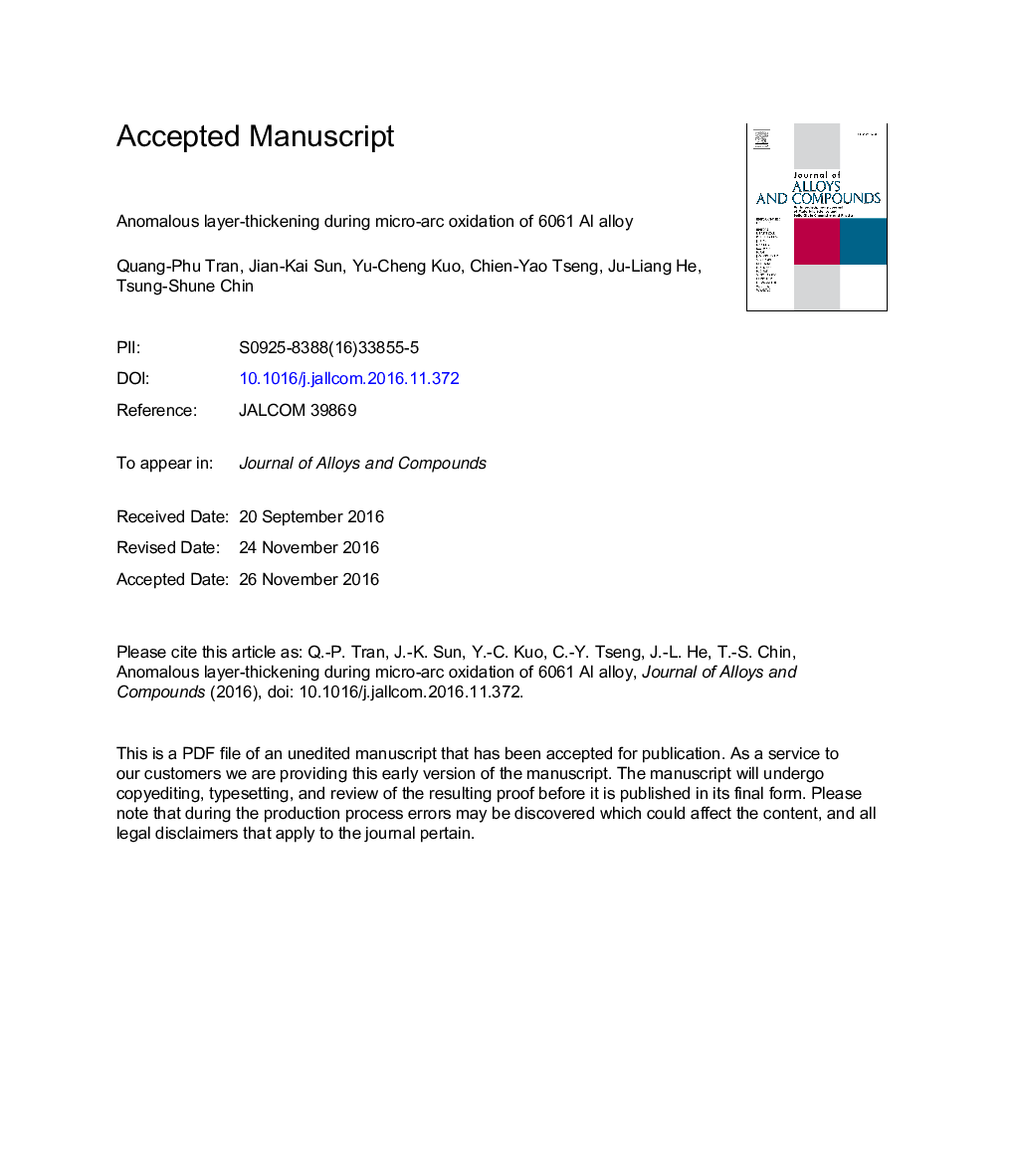| کد مقاله | کد نشریه | سال انتشار | مقاله انگلیسی | نسخه تمام متن |
|---|---|---|---|---|
| 5460644 | 1516197 | 2017 | 32 صفحه PDF | دانلود رایگان |
عنوان انگلیسی مقاله ISI
Anomalous layer-thickening during micro-arc oxidation of 6061 Al alloy
ترجمه فارسی عنوان
ضخیم شدن لایه بیومکانیک در طی اکسیداسیون میکرو قوس 6061 آلیاژ آلومینیوم
دانلود مقاله + سفارش ترجمه
دانلود مقاله ISI انگلیسی
رایگان برای ایرانیان
کلمات کلیدی
موضوعات مرتبط
مهندسی و علوم پایه
مهندسی مواد
فلزات و آلیاژها
چکیده انگلیسی
Micro-arc oxidation (MAO) has been an important surface treatment of Al alloys for surface hard-coating and corrosion protection. We used direct current (DC) as the power supply at a constant current density 10 A/dm2 during 30-min MAO processing of 6061 Al alloy. The electrolyte bath contained 9.765 g/L Na2SiO3 added with 10-60 mL/L ammonia water. With increasing added ammonia water in electrolyte bath, anomalous layer-thickening was observed reproducibly. Average coating thickness increases three times from 44 μm (no addition) to 135 μm (60 mL/L added). At 30 mL/L ammonia water micro-hardness of MAO layer maximizes at 1070 HV. X-ray diffraction shows the increasing intensity of amorphous phase accompanying with layer thickening. SEM analyses depict that size of surface micro-pore reduces with increasing added amount of ammonia water. Cross-sectional micrographs reveal micro-pores with a continuous coating-substrate interface. Elemental mapping and line-scans indicate uniform distribution of Al, O, Si and Na through the thickness of coating. Corrosion current density is plausibly improved to 6.41 Ã 10â10 A/cm2 by the addition of 60 mL/L ammonia water, whereas layer hardness is 840 HV. Anomalous thickening effect was not observed in case of surface layers micro-arc treated in ammonia water added electrolyte of sodium aluminate. In the later case no amorphous phase is observed in the MAO coating. The mechanism of anomalous thickening arises from the formation of amorphous surface-layer which entrapped large amount of solid debris formed during the discharging process and dispersing in electrolyte. The most significance of this highly corrosion-resistant thick and hard layer lies in the 66.7% energy budget when only 1/3 thickness is required.
ناشر
Database: Elsevier - ScienceDirect (ساینس دایرکت)
Journal: Journal of Alloys and Compounds - Volume 697, 15 March 2017, Pages 326-332
Journal: Journal of Alloys and Compounds - Volume 697, 15 March 2017, Pages 326-332
نویسندگان
Quang-Phu Tran, Jian-Kai Sun, Yu-Cheng Kuo, Chien-Yao Tseng, Ju-Liang He, Tsung-Shune Chin,
